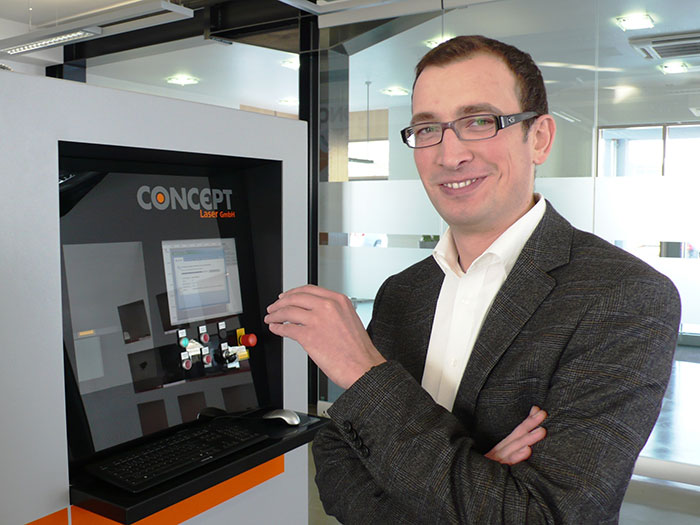“By enabling a machine to produce objects of any shape and [increasing] size, on the spot and as needed, 3D printing is ushering in a new era,” said Richard A. D’Aveni in his 2013 article titled “3D printing will change the world” in the Harvard Business Review. And now in 2014, a leading German innovator in the field of laser melting with the patented LaserCUSING® technology, Concept Laser has commercialized its Series model X line 1000R industrial 3D printing platform, which, according to the company, offers the largest build envelope for the laser melting of metals. The machine enables new applications for large components and quick construction rates (relatively speaking) that are securing some serious interest from the automotive and aerospace industries.
First presented at Euromold at the end of 2012, the large-format X line 1000R system was developed jointly with the Fraunhofer Institute for Laser Technology (ILT) in Aachen and is proving to be a step in the right development direction with more details emerging. Concept Laser’s new machine is capable of building parts that can weigh up to 1000 kg with a maximum part dimension of 740 mm. The Model X 1000R has a build envelope of 630 x 400 x 500 mm3 and a build volume of 125 liters making it the largest of its kind in the world for processing metal [1]. At the core of the system are optics developed by ILT with a 1,000-watt laser, which is a quantum leap from the earlier known highest laser power of 400 watt, making it possible to attain component sizes and construction rates of up to 65 cm³/h that are unprecedented in terms of both scale and power. The build envelope is large enough to build a standard V6 engine by additive manufacturing. Simply put, these specifications create significantly greater productivity when compared with other commercially available laser melting systems.

The X line 1000R allows for a significant increase in construction rates, improved surface quality, high reproducibility and system reliability thanks to process monitoring, as well as qualification of a wide range of powder materials for a variety of applications. It can handle and manufacture parts in a wide array metals like stainless steel, hot work tool steels, cobalt-chromium alloy, nickel-base alloy, reactive powder materials such as aluminium and titanium alloys and precious metals such as gold or silver alloys [1]. This versatility makes the adoption of additive manufacturing even more attractive to industries like aeronautics and space, automotive, medical and dental, and jewellery design.
As mentioned, two of the biggest and immediate beneficiaries of this new metal printing behemoth are the automotive and aerospace industries. Light weight aluminium alloys are currently popular among automotive industry enthusiasts who work in the XXL range, whose goal is to replace cost-intensive sand and die casting processes with additive manufacturing that makes it possible to create lightweight structures with high rigidity and weight-optimized geometries – with virtually no design restrictions. Elsewhere in recent times in the aeronautical and space industries, there has been an increased need for applications using titanium and nickel-based alloys by organizations like NASA and EADS Group. These material classes are primarily attractive for the extreme requirements in the development of jet engine drives. In addition to drive technology components, these also include test beds in space flight and turbine parts in power plant engineering and aircraft construction [1].
It is evident that the capabilities of 3D printing hardware are rapidly evolving, and they can now build mega components, yet with a greater precision and finer resolution at higher speeds. Over the longer term, machines like Model X 1000R and novel applications in additive manufacturing could transform industries in unexpected ways, moving the source of competitive advantage from the ability to manufacture in high volumes at low cost and toward other areas of the value chain, such as design and even the total cost of ownership [2].
Source: [1]A first: Concept Laser introduces the largest component produced to date using the additive process, [2]3-D printing takes shape

Leave A Comment